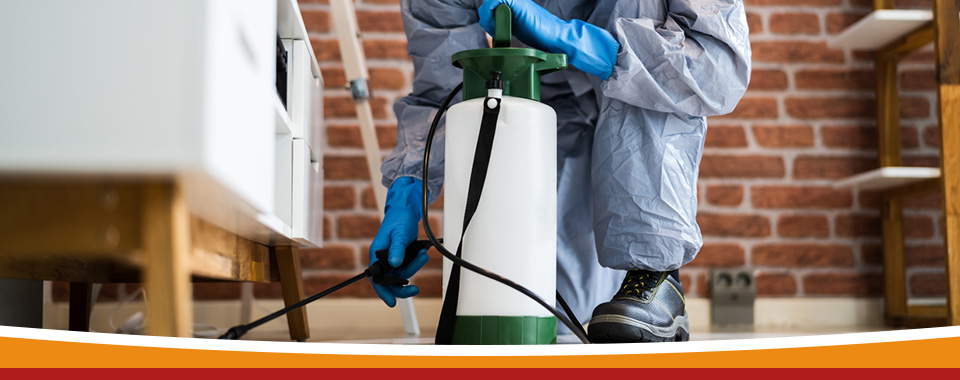Professional Insect Control Techniques for Long-Term Results
In the realm of pest control, attaining sustained effectiveness and long-lasting outcomes requires a precise strategy that goes beyond mere extermination. Expert parasite control strategies encapsulate a comprehensive strategy that begins with a comprehensive inspection and analysis, followed by accurate bug recognition to comprehend their habits patterns. The execution of Integrated Pest Administration (IPM) concepts, paired with eco-conscious therapies, forms the foundation of lasting pest elimination. However, real examination hinges on the recurring monitoring and maintenance of the dealt with areas, ensuring a pest-free setting for the direct future. By diving into the ins and outs of these methods, a deeper understanding of specialist parasite control approaches for sustaining results emerges.
Evaluation and Evaluation
Upon going into a building for bug control solutions, the preliminary step is an extensive evaluation and assessment to identify the level of the invasion and determine one of the most effective therapy strategy. Professional parasite control professionals are trained to thoroughly analyze the premises, seeking signs of pest task such as droppings, gnaw marks, nests, or any type of structural damages. They will likewise evaluate the problems that may be drawing in pests, such as food sources, water leaks, or entry factors.

Bug Identification and Actions

Additionally, comprehending the actions of the identified insect is crucial to executing efficient control actions. As an example, recognizing where parasites nest, what they eat, and their task patterns can help pest control experts create approaches to eradicate them effectively. Some parasites may be nighttime, while others are more energetic throughout the day. This expertise permits the application of treatments at optimal times for optimum performance.
Integrated Insect Management (IPM)
Integrated Bug Administration (IPM) techniques integrate multiple techniques to control and protect against parasite problems in a sustainable and eco friendly way. pest control. By incorporating approaches such as organic control, environment manipulation, alteration of cultural techniques, and the use of immune selections, IPM aims to lessen making use of chemical pesticides
Among the crucial concepts of IPM is the focus on prevention. This aggressive strategy entails monitoring bug populations on a he has a good point regular basis to discover any prospective issues before they rise. By determining bug problems beforehand, pest control measures can be executed swiftly and successfully.
Additionally, IPM advertises making use of non-toxic bug control approaches whenever possible. This can include employing natural predators of the parasites, presenting useful bugs, or utilizing scents to interfere with breeding patterns. By reducing reliance on chemical pesticides, IPM not just shields the setting yet also assists maintain an equilibrium in the ecological community.
Environmentally-Friendly Treatments
Implementing eco-conscious techniques in bug control treatments can effectively deal with infestations while prioritizing environmental sustainability. Environmentally-friendly treatments focus on lessening the influence of parasite control methods on ecosystems, non-target organisms, and human health. These methods frequently involve making use of all-natural predators, such as ladybugs or nematodes, to control pest populations, decreasing the requirement for chemical interventions. Additionally, techniques like habitat control, such check out this site as changing moisture levels or getting rid of food resources, can help hinder bugs without using damaging compounds.
One more secret element of environmentally-friendly treatments is the usage of natural and eco-friendly products that damage down promptly without leaving dangerous residues in the atmosphere. Herb pesticides originated from plants like chrysanthemums or neem supply efficient pest control while posing minimal threat to non-target varieties. Utilizing approaches like heat treatments or pheromone traps can target certain bugs with accuracy, lowering the total environmental impact of pest control practices.
Continuous Tracking and Upkeep
Continuous monitoring and maintenance are important elements of efficient bug control monitoring. Recurring monitoring plays a crucial function in guaranteeing that parasite invasions are detected early and handled without delay. Routine assessments by trained professionals are required to recognize any kind of indicators of pest task, examine the performance of previous treatments, the exterminator pest control and make adjustments to the pest control plan as required. By checking bug populations in time, parasite control experts can track trends, anticipate possible problems, and execute preventative procedures to minimize the risk of future infestations.
Along with surveillance, maintenance techniques are important for lasting insect control success. This includes carrying out proper hygiene actions to get rid of potential food and water resources for insects, securing off entry points to protect against insects from entering the properties, and attending to any architectural concerns that can assist in bug invasions (pest control). By integrating recurring monitoring and maintenance right into an incorporated insect administration method, organizations can make certain a pest-free atmosphere and safeguard their residential property against expensive damages and health threats
Conclusion
Finally, making use of expert bug control strategies such as complete inspection and assessment, exact bug recognition and understanding of their actions, integrated pest monitoring methods, environmentally-friendly treatments, and recurring surveillance and maintenance are vital for attaining lasting lead to parasite control. By implementing these methods, people can efficiently take care of bug infestations and keep a pest-free atmosphere in a lasting way.